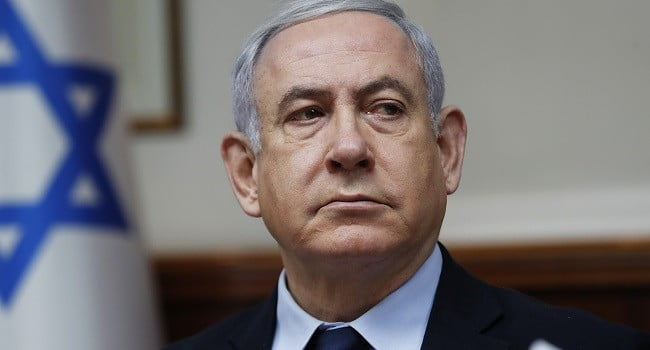Here are key dates in the Israeli governments led by Benjamin Netanyahu since 2009
The right-wing Likud party chief Netanyahu becomes prime minister for a second time in March 2009, after a first stint between 1996 and 1999.
He forms a coalition firmly anchored to the right, with the post of foreign minister going to ultra-nationalist Avigdor Lieberman.
In March 2013, Netanyahu’s new governing coalition takes office after snap January polls, with a strong showing of hardliners in favour of Israeli construction on Palestinian land seized during the 1967 Six-Day War.
– Gaza wars –
In July 2014, Israel launches a military operation against the Hamas-run Gaza Strip with the aim of ending rocket fire and destroying smuggling tunnels used by militant groups in the blockaded territory.
The war leaves 2,251 dead on the Palestinian side, mostly civilians, and 74 on the Israeli side, mostly soldiers.
– Most right-wing government –
In May 2015, Netanyahu wins a confidence vote in parliament for his fourth government.
A year later, he signs a coalition agreement with Lieberman’s Yisrael Beiteinu party, naming him defence minister.
The government is the most right-wing in Israeli history.
In June 2017, Israel starts building its first new government-sanctioned settlement in the occupied Palestinian territories since 1991 in defiance of international concern.
Settlement building takes on momentum under Netanyahu, with the support of his staunch US ally President Donald Trump.
– Deadly Gaza flare-up –
A mass protest is launched in Gaza in March 2018 to demand the right for Palestinians to return to homes in Israel that they fled or were expelled from after the creation of the Jewish state in 1948.
It sees a surge in violence on the border where Palestinians gather every Friday.
From March 2018 to December 2019 at least 352 Palestinians are killed by Israeli fire, mostly during protests
along the border. Eight Israelis also perish.
A ceasefire is currently in force between Hamas and Israel.
– Political crisis –
On April 9, 2019, Likud wins 35 of the 120 seats in parliament, the same number as Netanyahu’s centrist challenger Benny Gantz at a general election.
On April 17, President Reuven Rivlin formally tasks Netanyahu with forming a government, but the prime minister is unable to secure a majority coalition.
On May 29, parliament votes to dissolve itself and holds a new election.
In the September 17 polls, Netanyahu’s Likud party and Gantz’s Blue and White alliance are again almost neck-and-neck.
Neither man can manage to form a coalition government, propelling the country into a third poll.
– Trump support –
On January 28, 2020, Trump, who has been an unfailing backer of Netanyahu’s Israel since taking power in January 2017, unveils a Middle East peace plan, which includes many concessions to Israel.
– Third stalemate –
On March 2, Israelis go to the polls for the third time in less than a year, resulting in another stalemate between Netanyahu and Gantz.
On March 15, an Israeli court postpones Netanyahu’s graft trial amid fears of the spread of the new coronavirus.
In late March Gantz decides to seek a deal with Netanyahu for an interim emergency alliance to lead Israel
during the coronavirus pandemic.
– Unity government –
On April 20 Netanyahu and Gantz announce a deal to form an emergency unity government.
The three-year agreement will allow Netanyahu to stay in office for 18 months while Gantz, a former army chief, heads the defence ministry.
Gantz will then take over as premier for another 18 months before a new round of elections.
On May 7 Rivlin tasks Netanyahu with forming a new government, which has earlier been backed by parliament.
AFP



